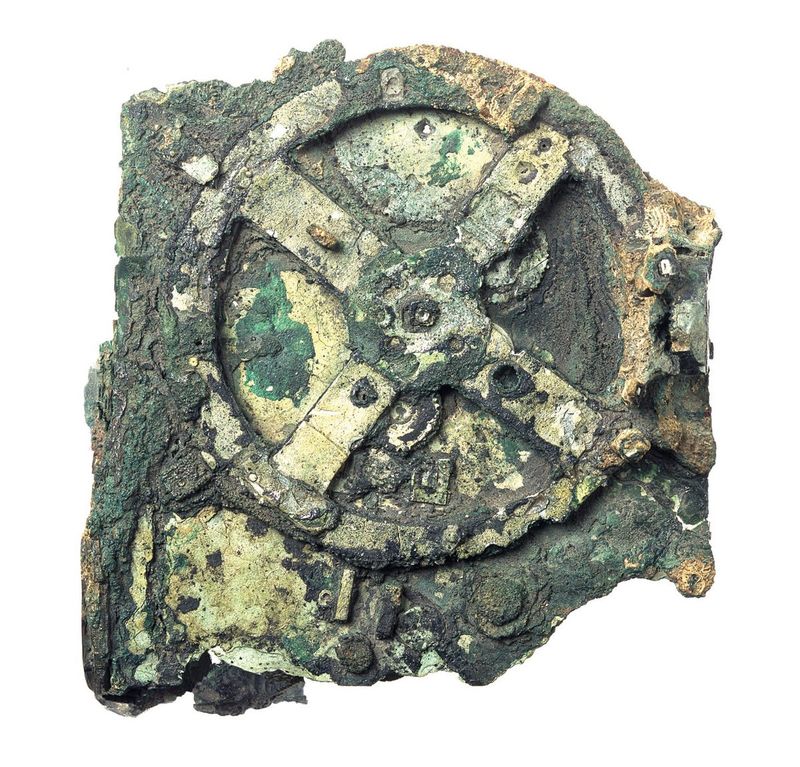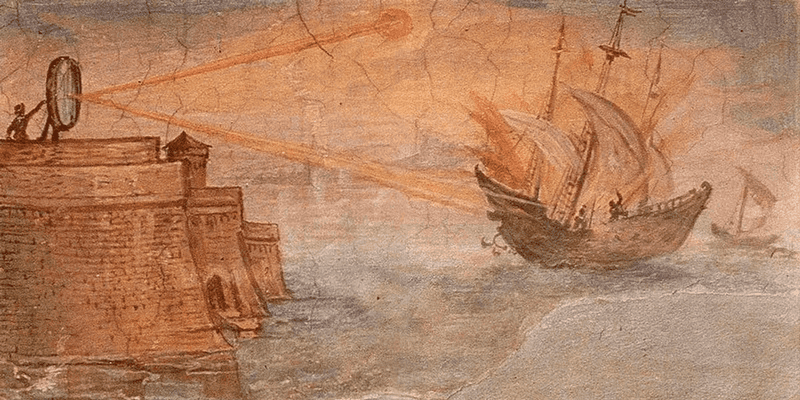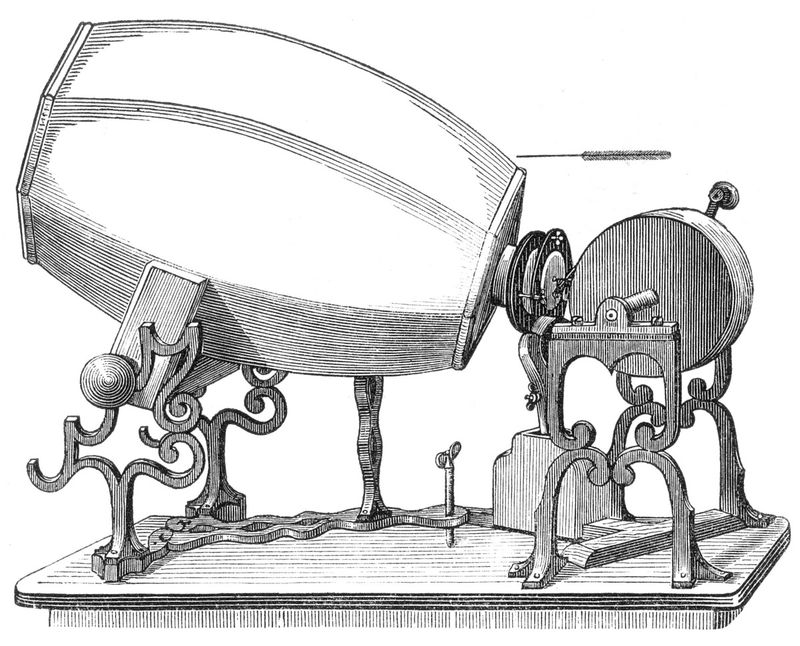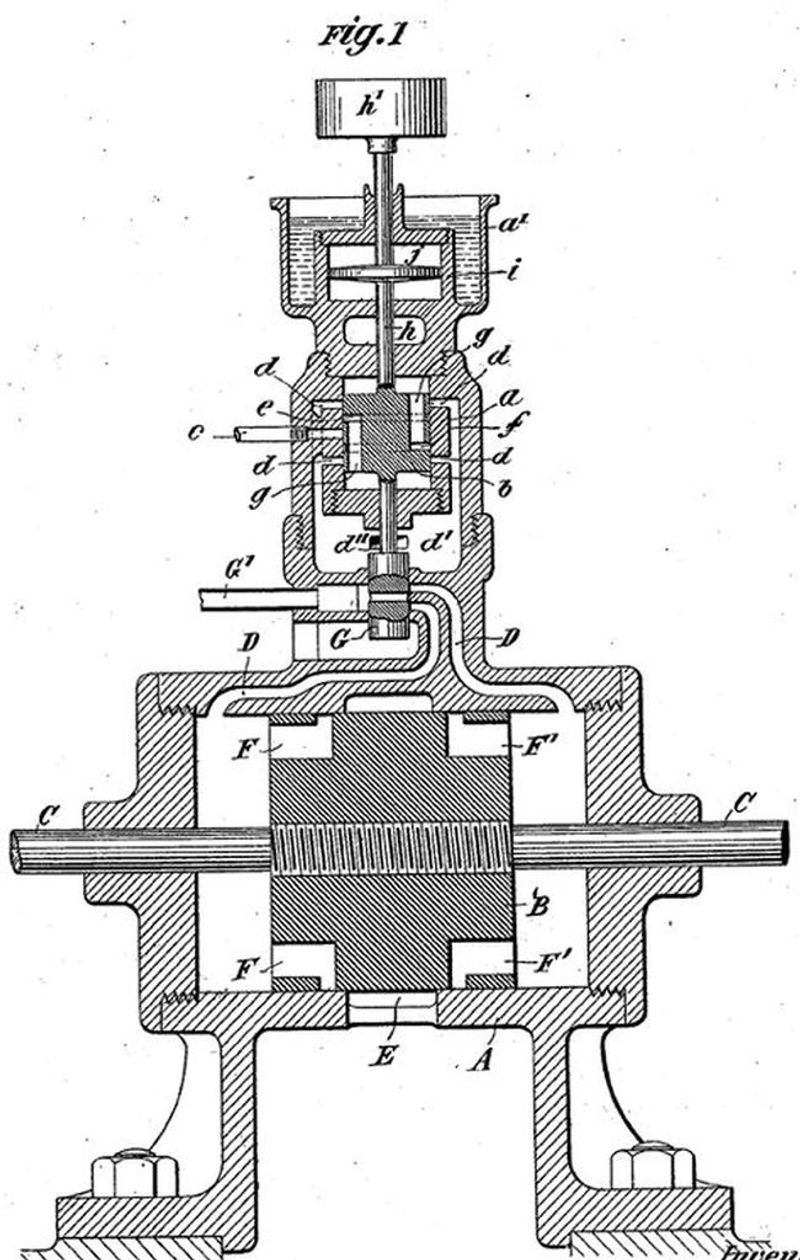Explore the intriguing world of inventions that once shaped history only to vanish in the mists of time. From miraculous technologies to ancient mysteries, these 17 lost innovations not only revolutionized their era but left behind a tantalizing legacy of curiosity and wonder.
1. Greek Fire (7th Century AD)
Greek Fire was a fearsome weapon of the Byzantine Empire, known for burning even on water. Imagine a naval battle where enemy ships burst into flames, their crews in disarray. This potent incendiary, akin to napalm, instilled dread. Despite its effectiveness, the precise chemical formula was a closely guarded state secret. When Constantinople fell in 1453, the secret perished with the empire. Attempts to recreate it have only deepened its enigma. Greek Fire remains a symbol of Byzantine might and mystery, a ghost of warfare past, lingering in historical whispers.
2. Damascus Steel (3rd–18th Century)
Damascus Steel, celebrated in Middle Eastern swords, was renowned for its strength and beauty. Crafted from wootz steel, these blades bore patterns like flowing water, able to slice through armor with ease. The secret lay in the forging technique, possibly involving carbon nanotubes. However, as ore sources dwindled, so did the ability to produce this legendary steel. The loss of this art marked the end of an era in metallurgical excellence. Today, the quest to rediscover its secrets continues, a testament to human ingenuity lost over time.
3. The Antikythera Mechanism (100 BCE)
The Antikythera Mechanism, an ancient Greek marvel, served as a sophisticated astronomical calculator. Discovered in a sunken ship, this intricate device predicted eclipses and tracked celestial movements, a testament to Greek innovation. With its complex gears and dials, it was centuries ahead of its time. Yet, it became a forgotten relic until the 20th century revived its story. As historians continue to unravel its mysteries, the Antikythera Mechanism stands as an enduring symbol of ancient science and human curiosity.
4. Roman Self-Healing Concrete
Roman concrete, a marvel of ancient engineering, was famed for its durability and self-healing properties when exposed to seawater. Structures like the Pantheon testify to its resilience. The secret? Likely volcanic ash mixed in the formula. When the Roman Empire fell, so did the knowledge of this wondrous substance. Today, scientists study its composition, hoping to harness its ancient magic. Roman concrete remains a testament to the empire’s architectural genius, a legacy of longevity lost and found.
5. Stradivari’s Violin Varnish (17th–18th Century)
Antonio Stradivari’s violins are synonymous with perfection, their sound unmatched. Many attribute this to a secret varnish, a formula now lost. Crafted in a time when violins were as much art as instrument, the varnish imbued each with a unique resonance. Stradivari took this secret to his grave, and despite attempts to replicate it, the exact composition remains elusive. Today, Stradivarius violins are revered, their sound a haunting echo of a bygone era of craftsmanship and musical purity.
6. The Archimedes Death Ray (3rd Century BCE)
Legend speaks of Archimedes creating a death ray using mirrors to focus sunlight, setting enemy ships ablaze. Though debated by historians, this tale captures imagination. If true, it would have showcased the brilliance of Greek science in warfare. The lack of surviving records means it remains a mystery. Modern tests have attempted to recreate this fabled weapon with mixed results. The Archimedes Death Ray, real or myth, embodies the innovative spirit of its era, a testament to human creativity.
7. The Baghdad Battery (Parthian Era, 250 BCE–224 AD)
The Baghdad Battery, unearthed near Baghdad, may have been an ancient battery. A clay jar containing an iron rod and copper cylinder, its purpose is still debated. Some suggest it was used for electroplating, others believe it had medicinal uses. Its true purpose remains a mystery, fueling imagination and inquiry. This artifact stands as a curious anomaly in ancient technology, a glimpse into the ingenuity of the past. Whether battery or not, its story continues to intrigue.
8. Flexible Glass (Roman Era, 1st Century AD)
Flexible Glass, or Vitrum Flexile, is a Roman legend of glass that could bend without breaking. Said to be presented to Emperor Tiberius, its creator met a grim fate to prevent economic upheaval. Whether myth or reality, the tale endures, symbolizing the potential of lost innovations. This mysterious material, had it existed, could have revolutionized manufacturing in the ancient world. The story of Flexible Glass remains a fascinating what-if scenario in history, a legend of ingenuity stifled by fear.
9. The Voynich Manuscript’s Unknown Language (15th Century)
The Voynich Manuscript, an undeciphered enigma, baffles linguists and cryptographers alike. Filled with bizarre plants and astrological symbols, its language remains a mystery. Despite advances in AI and code-breaking, the script remains unbroken. Its purpose, whether botanical guide or something more arcane, eludes discovery. The manuscript, with its intricate illustrations and cryptic text, fuels endless speculation. It is a testament to the mysteries still hidden in the annals of history, a book that challenges understanding and invites exploration.
10. The Cloudbuster (Wilhelm Reich, 1950s)
Wilhelm Reich’s Cloudbuster, aimed to manipulate weather using “orgone energy,” was both a marvel and controversy. Critics dismissed it as pseudoscience, but reports of successful weather changes intrigued many. Reich’s imprisonment and the burning of his work by the FDA silenced his cloudbusting endeavors. The Cloudbuster remains a symbol of unorthodox science, its potential lost to history. Despite skepticism, it embodies the quest for understanding nature’s forces, a chapter of scientific exploration both curious and contentious.
11. The Phonautograph (1857 – Before the Phonograph)
The Phonautograph, invented by Édouard-Léon Scott, was a pioneer in sound recording, capturing sound waves on paper. Yet, it could not replay them. Overshadowed by Edison’s phonograph, its significance was forgotten until recently. Historical recordings were recovered and rendered audible, revealing the Phonautograph’s historical importance. Though eclipsed, it laid the groundwork for future sound technologies. This early device represents the beginnings of audio exploration, a stepping stone in capturing the ephemeral nature of sound and preserving it for posterity.
12. The Tesla Earthquake Machine (1930s)
Nikola Tesla’s Earthquake Machine, a mechanical oscillator, was rumored to cause tremors. Tesla’s experiments allegedly shook buildings, a testament to his innovative genius. Yet, concerns over its power led him to dismantle it, and no blueprints survived. The mystery of this device adds to Tesla’s legendary status. Whether fact or embellishment, it underscores his exploration of mechanical resonance. Tesla’s Earthquake Machine remains a captivating tale of invention and restraint, a reminder of the thin line between discovery and danger.
13. The Chronovisor (Vatican’s “Time Viewer” Legend)
The Chronovisor, a Vatican legend, purportedly allowed viewing of past events. Allegedly used to witness Christ’s crucifixion, it remains shrouded in secrecy. The Catholic Church denies its existence, feeding suspicions and intrigue. Whether real or myth, the Chronovisor captivates with its promise of time travel and historical insight. It stands as a symbol of undisclosed knowledge and tantalizing possibilities. This mysterious device continues to fuel speculation about hidden technologies within the corridors of religious power.
14. Starlite (1980s – Super Heat-Resistant Material)
Starlite, a miraculous heat-resistant material, could withstand nuclear-level temperatures. Inventor Maurice Ward’s creation astonished scientists, enduring extreme heat without damage. Yet, Ward never fully patented Starlite, keeping its composition secret. Upon his death, the formula vanished, leaving behind only tales of its potential. Starlite remains a captivating example of individual ingenuity, a material that might have transformed industries. Its story is one of brilliant innovation lost to secrecy, a futuristic promise never fully realized.
15. The Sloot Digital Coding System (1990s)
The Sloot Digital Coding System, by Dutch inventor Jan Sloot, promised to compress vast amounts of data into minuscule sizes. A full movie in 8KB defied known physics, intriguing investors worldwide. However, Sloot died before unveiling his method, leaving behind only curiosity and skepticism. This coding system remains a fascinating chapter in digital history, a lost opportunity that haunts the tech world. The mystery of Sloot’s technique persists, symbolizing the thin boundary between groundbreaking discovery and unsolved enigma.
16. The Aeolipile (Hero of Alexandria’s Steam Engine, 1st Century AD)
Hero of Alexandria’s Aeolipile, the first steam engine, was a spinning sphere propelled by steam jets. Though a marvel, it was dismissed as a novelty by the Romans. This oversight delayed the Industrial Revolution by centuries. The Aeolipile symbolizes unrecognized potential, a playful experiment with profound implications for future technology. Its story is a reminder of how innovation can be overlooked, waiting patiently for rediscovery. This device is a testament to human creativity and the serendipity of technological progress.
17. The Ötzi the Iceman’s Medicinal Mushrooms (3300 BCE)
Ötzi the Iceman carried medicinal mushrooms, hinting at advanced prehistoric medicine. These antibiotic fungi, found with his mummified remains, suggest knowledge of natural remedies in Neolithic times. The understanding of such healing properties vanished for millennia, a lost chapter in the history of medicine. Ötzi’s discovery provides a window into the past, revealing the enduring connection between humans and nature’s pharmacy. His story is one of survival and the timeless quest for health, a narrative preserved in ice.

















